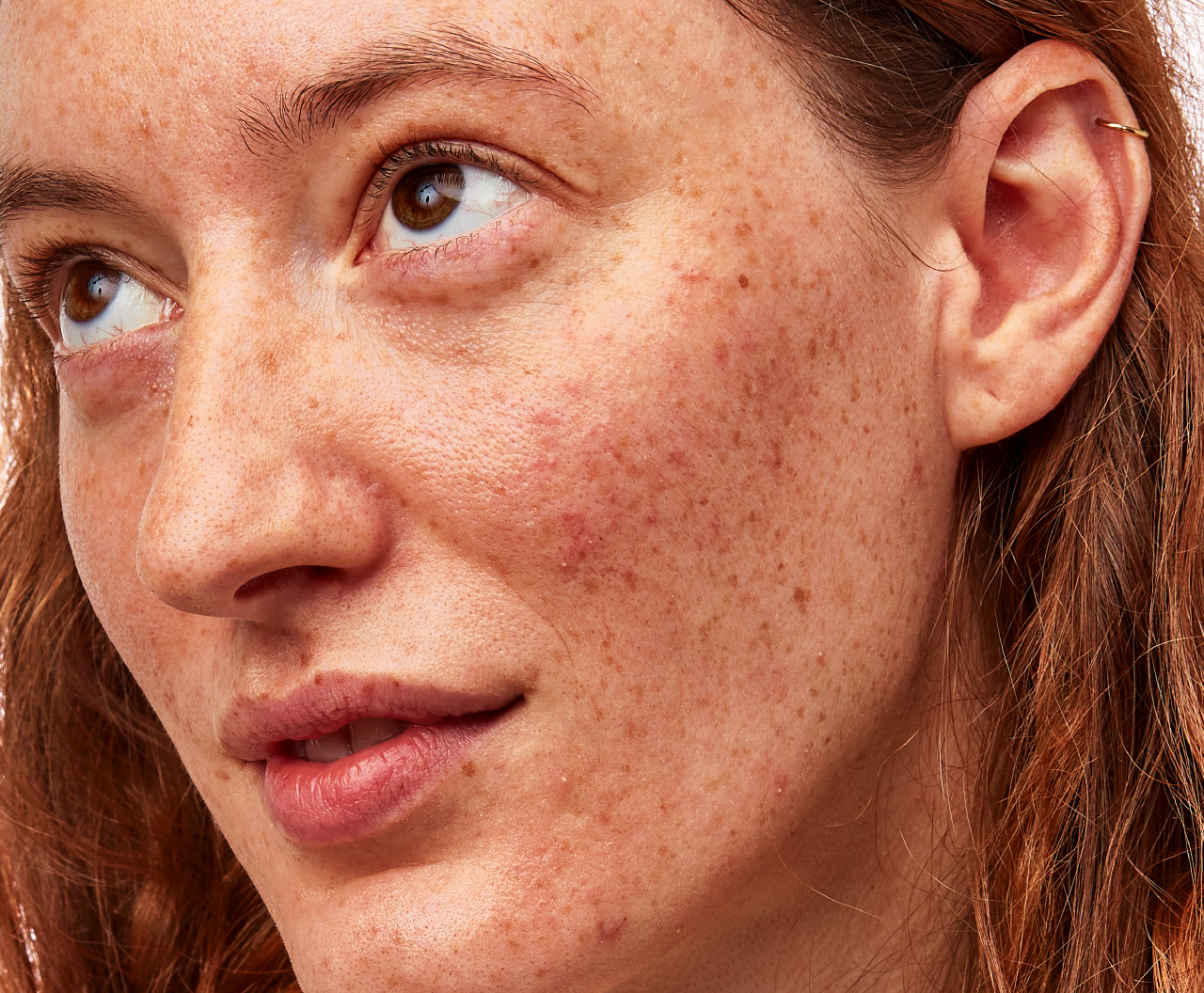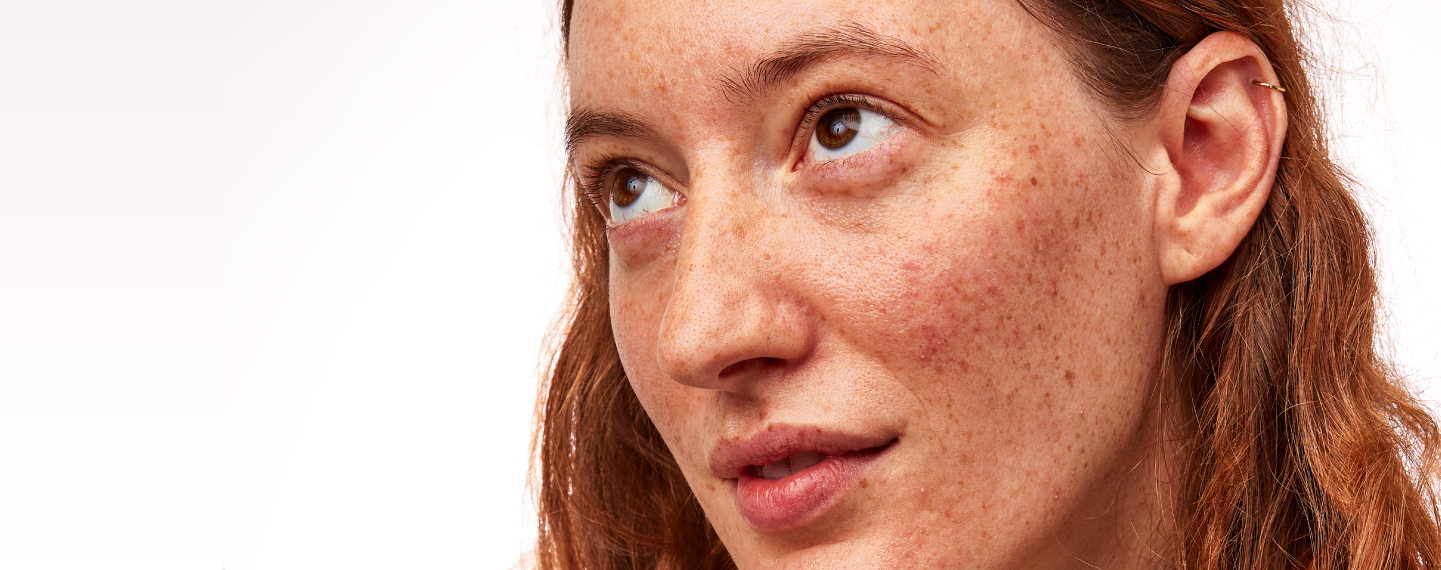Education
Microdermabrasion: how it works and costs


SHARE
Education
Microdermabrasion: how it works and costs
Medically reviewed by Mary Lucas, RN
Written by Apostrophe Team
Last updated 4/1/2024
So you’ve tried moisturizing creams and other non-invasive remedies, and you’re ready to go under knives or needles for more youthful looking skin?
There may be a step between face washes and chemical peels that you should consider: microdermabrasion.
There are a variety of products and procedures on the market promising youthful, glowing skin.
To a large extent, every anti-aging skin treatment works the same way: by removing older, dead cells from the top of your skin and/or encouraging more rapid and healthy production of new cells.
Microdermabrasion accomplishes this by gently sanding or blasting away those dead cells. In the process, it can treat symptoms of skin damage like age spots, hyperpigmentation, treat acne and reduce the appearance of stretch marks, fine lines and wrinkles, scars, and enlarged pores.
And though it’s certainly more expensive than a jar of generic cream at the drugstore, microdermabrasion is more affordable than you might expect, with some caveats.
Before we get to affordability and whether microdermabrasion might be right for you, let’s discuss how it works.
What Microdermabrasion Can Help With
Microdermabrasion is a procedure developed in the 1980s to reduce the appearance of cosmetic skin issues, including large pores, fine lines, wrinkles, tattoos, and superficial scars. In other words, it’s a sort of all-encompassing treatment option for things that can make your skin look older and less healthy. It’s also FDA-approved.
The procedure works by damaging the stratum corneum (the top layer of the epidermis). Under vacuum, it bombards the skin with abrasive particles (which can be made of alumina or sodium chloride). The vacuum then sucks up the damaged skin and abrasive particles.
This damage to the stratum corneum causes your body to respond with an inflammatory response, and that response involves increasing collagen production, which can firm the skin and lead to the reduction of those signs of age and damage we mentioned earlier.
It can also help reduce scarring from acne. If you’re suffering from damage or ongoing cases of acne, check out our guide to treating acne scars.
How Microdermabrasion Differs from Dermabrasion
Microdermabrasion and dermabrasion are both medical procedures for exfoliating the skin. Dermabrasion is a more aggressive procedure where a tool is used to essentially sand off the top layer of skin, while microdermabrasion is a less aggressive but similar procedure.
The main difference between the two is that instead of sanding the skin, microdermabrasion uses a tool to fire tiny crystals at the skin, essentially sandblasting off the outer layer.
But the line between the two procedures has blurred with the introduction of a new microderm technique.
Newer diamond microdermabrasion procedures use a diamond-tipped tool to lightly sand away the outer skin cells, but this is both less invasive and more severe than regular dermabrasion, and does not require any recovery time.
Microdermabrasion can be administered at spas, or by cosmetic surgeons or dermatologists, and is generally considered safe, minimally painful and effective.
The Cost of Microdermabrasion
Although microdermabrasion is a medical procedure, it’s not terribly invasive, and it costs a fraction of the average chemical peel.
According to 2019 statistics from the American Society of Plastic Surgeons, the average cost of a microdermabrasion treatment is a little over a hundred bucks.
The ASPS notes that this number does not necessarily include additional fees, which might represent administrative or other costs.
And prices vary based on your market (location), the particular type of microdermabrasion performed, as well as the expertise and qualifications of the person performing the procedure.
But the most important thing to understand about microdermabrasion prices is that it will likely take more than one treatment to achieve the results you’re looking for, particularly if your lines are deeper or your sun damage is more severe.
Side Effects
Microdermabrasion generally has minimal side effects, and most patients experience no serious complications or issues.
Commonly reported side effects include what you might expect from any abrasive treatments: tenderness, swelling, bruising, and petechiae (small pin-point sized spots on the skin that do not fade when you press on them).
Complications can also include activation of latent herpes simplex virus, and your sensitivity to photodamage for a couple of days afterward will be increased.
Crystal-based microdermabrasion treatments may also cause eye irritation if loose crystals make their way into your eyes.
But microdermabrasion is generally considered safe and effective, and serious complications or injuries are rare when it is performed by a professional.
At-home microdermabrasion kits exist, and when instructions aren’t followed they can make these complications more frequent and serious, so if you’re considering doing this procedure yourself, follow the directions and consider consulting a professional before going it alone.
Microdermabrasion Alternatives
Microdermabrasion is an effective treatment for a variety of skin issues, but there are alternatives, both more and less aggressive, that also involve exfoliation.
One example would be chemexfoliation, or chemical peeling, which involves the use of chemicals to remove damaged skin.
Depending on the depth of the peel, it can cause more serious versions of the same side effects, and additional issues like dehydration, infections, and increased photosensitivity may occur.
Another alternative is laser resurfacing, which is used for treating minor skin flaws and can be effective in treating skin damage, particularly scars.
It’s best used on individual, targeted sites, whereas a chemical peel works best on larger areas.
On the other hand, there are less aggressive options, including retinoids like topical tretinoin, which, since the 1960s, has been used by dermatologists to treat skin issues.

PRESCRIPTION TRETINOIN
Target acne, dark spots, and signs of aging with this science-backed ingredient.
Tretinoin has been shown to stimulate the production of collagen, although side effects can include irritation and peeling in certain cases with certain skin types.
Learn more about tretinoin here, and see if it’s right for you.
Final Thoughts
If you’re considering microdermabrasion for your skin, it is important to consult a healthcare professional to find out if it’s the right treatment for you.
While the price may not cause immediate sticker shock, other treatments may be more effective (with fewer individual sessions) depending on your condition.
And you may also find that microdermabrasion is more aggressive than you need, particularly if your skin issues are mild.
References:
Shop this post

Tretinoin
Like what you just read? Sign up for our email list to get the scoop on skincare science delivered straight to your inbox.

Education
What is milia?
What is milia? Today, we’re jumping into one type of bump that you may have heard about most commonly in infants — milia.
Read More
Education
Best moisturizer for acne-prone skin
If you have combination acne-prone skin, figuring out which moisturizer is best for your skin might be tough. In this guide, we break down the best moisturizer for combination, acne-prone skin.
Read More
Education
How to build a face care routine
As you get into skincare, it might seem overwhelming, especially trying to figure out the order you're supposed to apply products in. Below, we detail how to build a face care routine for your skin!
Read More